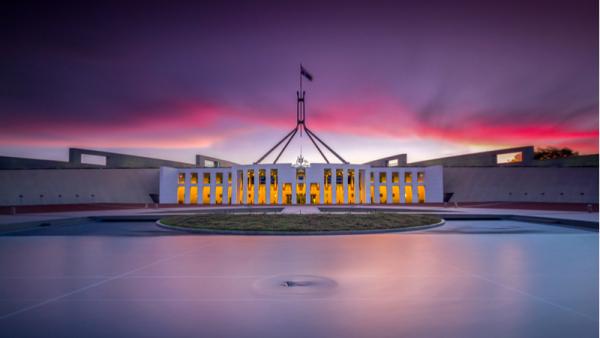
Bob Carr, Director, Australia-China Relations Institute, University of Technology Sydney |
This article appeared in Pearls and Irritations on May 8 2018.
Canberra is giving indications it believes an 18-month tilt to a marked anti-China stance might now be corrected. There are hints the Turnbull Government recognises that being the most rhetorically hostile to China of all US allies does not serve our national interest.
Until early 2017 Australia’s policy from Whitlam to Abbott presented a continuity. Australian governments were able to tell the Chinese that yes, we had the ANZUS treaty but it was not directed at China and, by implication, would not require Australia to go to war with China (unless China launched a war). Australia didn’t elevate the issue of China’s different political system. Diplomatic relations were kept separate from ideology. There were periods when tensions in the relationship accumulated – over the Taiwan Straits in the early years of the Howard Government, over foreign investment in the early years of Rudd – but Australian Prime Ministers seized the opportunity to remodulate the relationship. At no stage could it have been said that Australia had been drifting into a Cold War with China.
Even the Abbott Government’s relationship with China could be described as fitting this pattern of national interest-based pragmatism. In 2014 both sides upgraded the relationship to the category of ‘comprehensive strategic partnership’ and in 2015 concluded the Free Trade Agreement. The Government quietly ignored strong hints from US admirals that Australia should run patrols to specifically challenge Chinese territorial claims in the South China Sea. And Australia declined a request from President Obama to stand aside from the Asian Infrastructure Investment Bank.
None of this pragmatic engagement with China was ever assumed to mean that Australia could not maintain a dialogue with China on human rights – the human rights dialogue had begun under Howard – or had to stop saying that we believed international law must prevail in the South China Sea and there should be no pre-emptive moves or militarisation.
It’s hard to portray Turnbull Government policy since January 2017 as anything other than a break with this Whitlam to Abbott consensus. For the first time Australia chose to elevate China’s internal politics (Julie Bishop’s speech in Singapore on March 13) causing Tom Switzer to write, ‘Ever since Gough Whitlam’s opening in the early 1970s, our prime ministers and foreign ministers have generally refrained from lecturing the Communist leaders about the merits of democracy or calling for any containment of China.’ The Prime Minister said in June 2017 that Australia wanted bigger US military commitment to the Asian region. This could be read as a shift towards a containment policy directed at China. About this Hugh White noted that ‘no regional leader – not even Japan’s bellicose PM Shinzo Abe – has ever gone this far before.’
Australia’s language became more consistently adversarial towards China than that of any US ally – the Europeans, Canada, New Zealand. It appeared throughout 2017 that no spokesperson for the Australian Government could manage to say anything positive about the relationship with China, even when baseless attacks on Chinese students in Australia provided a perfect opportunity for a minister to speak up in their defence and support engagement with China on education, such a large part of the relationship.
Much of the tenor was captured by Dennis Richardson’s comment in June 2017 that took issue with China’s historically not unreasonable assertion it was returning to the economic and geopolitical strength that it had occupied under the Qing Dynasty in the early 19th century, and from which it had been displaced by imperialist depredations and wars. Why Australia would want to take issue with any piece of historical narrative subscribed to by a partner is mysterious – the US claim to be a shining light on a hill or Indonesia’s to have trail-blazed non-alignment – is a mystery to this day. Why the Prime Minister chose on December 7, introducing anti-espionage and anti-foreign influence legislation, to taunt China with a piece of its political scripture – ‘the Australian people stand up’ – instead of sticking to the Departmental script, and saying that this legislation is directed at no nation but simply at protection of Australian sovereignty – this, too is a mystery for historians to work at.
The anti-China excitement reached a paroxysm in January with comments on the South Pacific by a junior minister and the Deputy Prime Minister’s observation that China could ‘basically overrun’ Australia. It would indeed be a sluggish Ministry of Foreign Affairs in Beijing that didn’t take notice of the news reports and cables that chronicled a distinct shift in Australia-China relations, so much of it gratuitous and a lot suggesting that no one in Canberra was in charge, certainly not the diplomats.
If the Prime Minister does not want the historic record to show that he took Australia to an anti-China policy more pronounced than that of any other US partner, he might consider a range of new engagements with China. None would require us to alter well-entrenched Australian positions on the prevalence of law in the South China Sea or on our attachment to the universal applicability of human rights. They would simply seek, in the spirit John Howard invoked talking of his China record, to emphasise collaboration on areas where we can agree and setting aside differences.
On trade, for example, a nation with Australia’s experience in negotiations can surely help coordinate Japan, the Europeans, New Zealand and Canada in interventions between the US and China, working to avert a ruinous trade war. Engagement might also embrace the fluid diplomacy of the Korean Peninsula. Australia might pursue dialogue with Japan about the future of the Peninsula and with China, which must be seeking American allies as interlocutors given the wayward and unpredictable shifts in Korean policy driven by President Trump.
On the South China Sea it would be futile for Australia to do what some of our valiant armchair strategists seem to warm to –talking up, for example, a return to French and British naval presences in the region. So quickly forgotten, it might be noted, the sad history of Repulse and Prince of Wales. Boris Johnson’s commitment to open three new embassies in the Pacific boils down to the Foreign Office taking up rental space in a level three office in downtown Port Vila and two other Pacific capitals. It looks a little short of power-shifting game changer.
The so-called Quad, which links Australia with the US, Japan and India for consultations, appears even less formidable than when it was inaugurated with a low-level meeting in the margins of the East Asia Summit last November. India and Japan have not let it shape their own policies with China. India has problems with the Trump administration and took Prime Minister Modi’s meeting with President Xi seriously; Japan is clearly exploring rapprochement with China.
Each of the 10 members of ASEAN has its own diplomacy with China but, with the remotely possible exception of Vietnam, none would contemplate committing to an anti-China bloc – which is how Singapore’s Prime Minister Lee Hsien Loong made it clear, in Sydney in March, he was inclined to regard the Quad.
What’s left for Australia except to recommit to an engagement with China, one that’s – yes – robust enough to embrace a diplomatic position firmly opposed to China’s militarisation in the South China Sea? It’s unlikely that Australia will change China’s dogma on the disputed territory. Only Southeast Asians themselves can do that and ASEAN unity, as we all know, has evaporated.
But if Turnbull succeeds in getting the bilateral relationship back in functioning mode, he can see that Australia has more opportunities with China to underline Australia’s well-worn position that international law must apply. But differences on the South China Sea don’t exhaust the relationship. There is surely – in the era of Trump, amid threats of nuclear proliferation, global warming as a security threat and a retreat from the rules of international trade – so many other areas where Australia and China can elevate and flesh out proper dialogue.
Author
Bob Carr is Director of the Australia-China Relations Institute at the University of Technology Sydney. He is a former foreign minister and was the longest serving premier of NSW.


